This article was updated on 06/06/2023.
If you’re already familiar with Kegels, it might be because you’ve heard people talking about them as a way to treat incontinence, particularly during and after pregnancy. Having a strong pelvic floor is essential to preventing urinary incontinence. But there are also a number of other benefits to doing Kegel exercises for pregnant people. So, if you’re wondering how to strengthen the pelvic floor while pregnant, read on to find out how pelvic floor exercises can help expectant mamas.
What are Kegel exercises?
If you’re reading this and thinking, eh? What is a Kegel? Let us explain. Kegel exercises (also known as Kegels, Kegel training, pelvic floor exercises, or pelvic floor muscle training) are targeted exercises that train and strengthen pelvic floor muscles.
Pelvic floor training programs can help to improve core strength and stability, as well as posture. They also help to support bladder control during pregnancy, speed up postnatal recovery, and reduce the risk of prolapse when performed correctly. They can even help to enhance the intensity of orgasms during sex.
Should you do Kegels during pregnancy?
Your body goes through so many changes when you’re pregnant that it can be hard to keep up with all of them. That said, there are numerous benefits to performing pelvic floor exercises for pregnant women. Here’s how Kegels can help while your bump is growing:
Strengthen your muscles as your baby grows. While your baby gets bigger, it also gets heavier. This can be a lot for your pelvic floor muscles to deal with, so it’s essential that you work them out to keep them strong.
Minimise muscle tears during birth. When you finally go into labour, your pelvic floor muscles will stretch a lot (understatement alert!) to make room for the baby to pass through. It’s estimated that about a third of women have some tearing in the pelvic floor muscle tissue during birth, but doing Kegel exercises while pregnant can help to avoid this.
Prevent prolapses. That pelvic floor muscles support the pelvic organs, which include the uterus, bladder, urethra and rectum. Pelvic organ prolapse can be caused by vaginal childbirth, but Kegels are one way to try and prevent this from happening.
Speed up postnatal recovery. Doing Kegels during pregnancy has been known to speed up your recovery postpartum. Having stronger pelvic floor muscles can help you heal faster, leading to less risk of incontinence, reduced pain, and better hip support.
Make the birth easier. Strengthening the pelvic floor muscles during pregnancy can also improve your ability to relax and control these muscles in preparation for labour and birth. You may find it easier to push and deliver your baby!
Practising Kegels to strengthen the pelvic floor during pregnancy can also reduce the risk of pelvic floor dysfunction, pelvic floor weakness, or pelvic pain after giving birth.
When to start kegel exercise in pregnancy
It’s never too early to start Kegels during pregnancy; however, your second trimester is a great time to begin. Practising pelvic floor exercises anytime throughout your pregnancy (the longer you do the exercises, however, the better your results will be) helps to minimise pregnancy-related urinary incontinence and strengthen your pelvic muscles to help your body adapt.
How to do Kegels during pregnancy
Following Kegel exercises during pregnancy and following the birth of your little one is a simple yet effective way of keeping your pelvic floor muscles strong — this also supports the bladder, bowels, rectum, and sexual function. Better yet, you can do Kegels from the comfort of your home.
Kegels involve pelvic floor muscle contraction, which focuses on squeezing and relaxing the same muscles you would use to stop a stream of urine and push during labour. Here are some tips on how to do kegel exercises for pregnant women:
Identify the right muscles. Before you start Kegels, you need to find the right muscles. To find your pelvic floor muscles, insert a clean finger into your vagina and squeeze — if you feel a tightening around your finger, you’re doing it right.
Get into a comfortable position. Kegel exercises are usually most comfortable while lying or sitting down, particularly during pregnancy. With more practice, however, you'll be able to do them standing up.
Squeeze, hold and release your pelvic floor muscles. Kegel exercises involve squeezing your pelvic muscles with the aim of increasing how long you can hold the position. Here are a few different Kegel exercise routines to try:
Squeeze your pelvic floor muscles and hold for several seconds.
Relax for a few seconds and repeat 10 times in a row. If you feel the contraction letting go, just refocus on tightening your pelvic floor muscles.
Don’t worry if you can only hold it for one or two seconds; over a few weeks, you'll gradually be able to increase the hold time by a second or two until you can hold for 10 seconds.
Introducing Kegels during pregnancy can improve many parts of your experience carrying a baby, whether that’s reducing pregnancy-related urinary incontinence or giving you more pelvic strength to push out your little one during a vaginal birth.
Practical tips for Kegel exercises during pregnancy
Whether you’re practising Kegels during pregnancy or after birth, you’ll want to get the best out of your routine. Here’s what can help:
Don’t strain. Everyone's pelvic floor muscles have different strengths. If you can’t hold the position for more than a few seconds, don’t strain or force yourself — you’ll improve over time.
Get help identifying your muscles if needed. It may be a little tricky identifying which muscles you’re working, so don’t be afraid to ask your healthcare provider for help. Alternatively, using a tool such as the Elvie Trainer helps you visualise your hidden pelvic muscles and improve pelvic floor contractions.
Work at a pace that suits you. It’s normal to experience a little pelvic soreness when you first start Kegel exercises, so don’t overdo it. Hold each position for as long as feels comfortable for you and gradually make progress.
The benefits of Kegel exercises postpartum
Yay, your baby’s here and you’re hopefully settling into life as a new mum. And while most of your time will be taken up with feeding, burping, soothing, cuddling (and not much sleeping), it’s important to try and prioritize your pelvic floor exercises after birth. Here’s why:
Kegels help to rebuild your strength. If you experienced tearing during birth (and even if you didn’t), pelvic floor exercises will help to rebuild your strength.
More bladder control. Urinary incontinence is relatively common, with almost 16% of women suffering from it – and childbirth increases the risk. Kegels can help minimise or prevent this.
More bowel control. Similar to postnatal urinary incontinence, fecal incontinence can also occur. This can have severe effects on your mental health and once again, Kegels can help to prepare and prevent this.
Better sex. A stronger pelvic floor can lead to stronger, more intense orgasms. Now, if that’s not enough to make you do them, we don’t know what is.
Performing pelvic floor muscle exercises after birth is a great way to aid your postnatal transition as your body starts to recover.
Do your Kegels
We’re aware that sounds a bit bossy, but it’s for your own good. The more we talk about pelvic floor health, the more women will realize how important Kegel exercises are. Especially during pregnancy and post-birth.
Kegels are pretty easy for expectant or new mums to do, and they’ll only take up around 10 to 15 minutes of your day. Plus, there are so many benefits to doing pelvic floor exercises during pregnancy — from combating incontinence to speeding up postnatal recovery — that there are barely any reasons not to do them. Trust us!


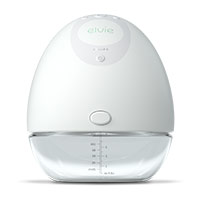

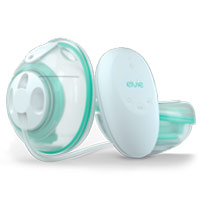
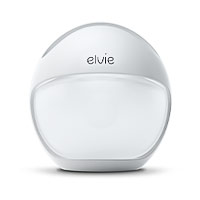
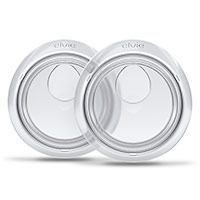
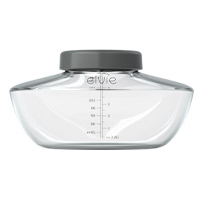
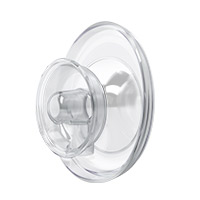

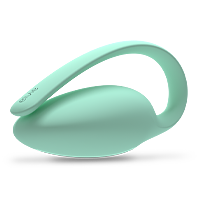
 7 minute read
7 minute read